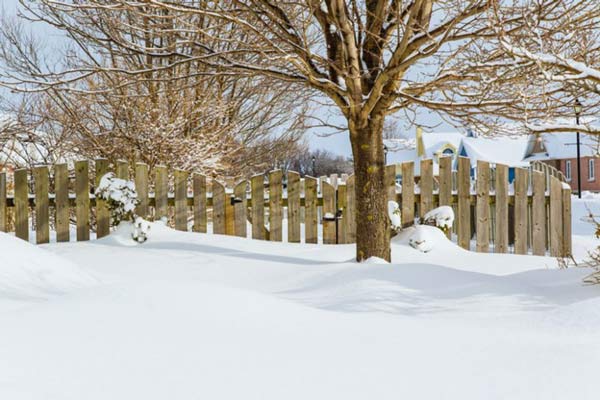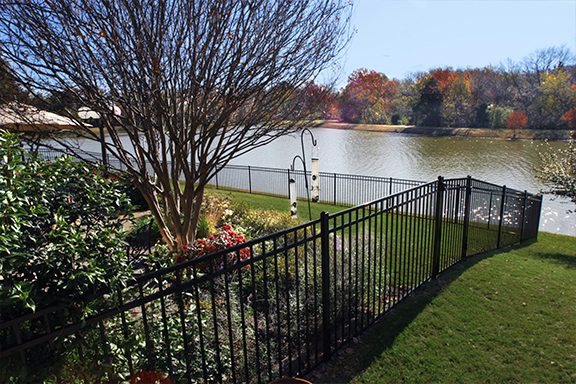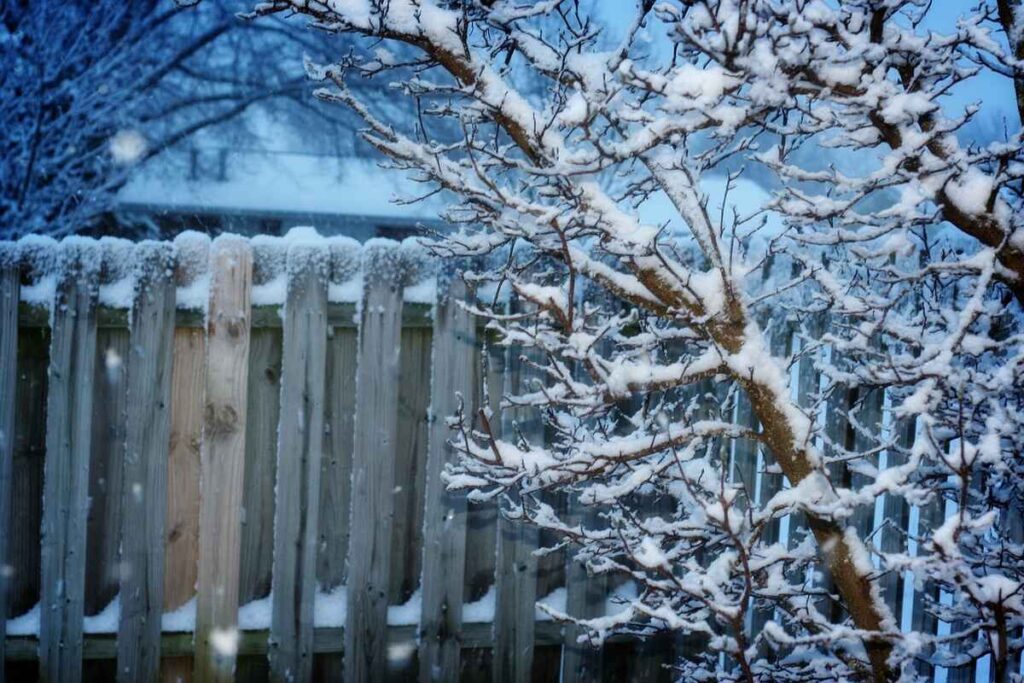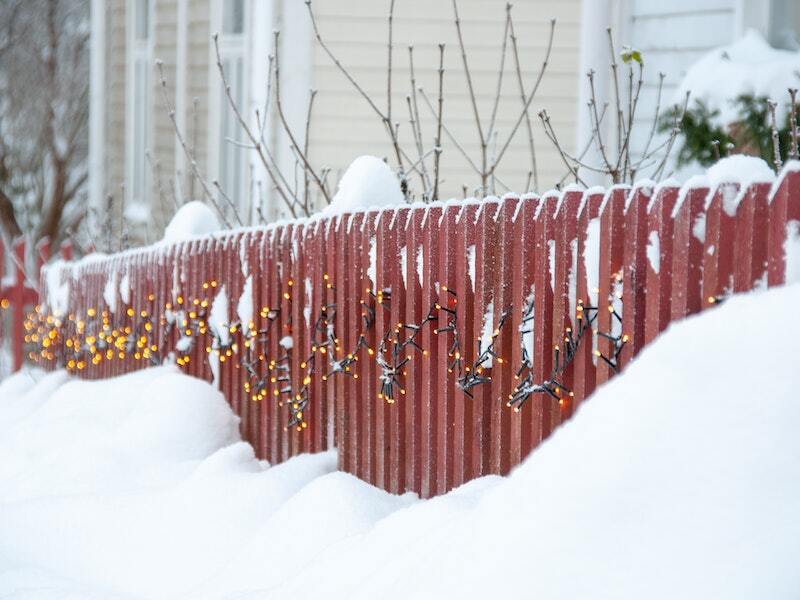Are you looking for solutions to protect your property in snowy climates? If you live in an area that experiences heavy snowfall, it’s important to have a fencing solution that can withstand the harsh weather conditions. In this article, we’ll explore different types of fencing options that are ideal for snowy climates. Whether you’re looking for durability, easy maintenance, or aesthetic appeal, we’ve got you covered. So let’s dive in and discover the best fencing solutions to keep your property secure and protected during the winter months.
When it comes to selecting a fence suitable for snowy climates, there are a few factors to consider. First and foremost, you’ll want to choose a fencing material that is durable and can withstand the weight of heavy snow. Some popular options include vinyl, aluminum, and chain-link fences. These materials are known for their strength and ability to withstand extreme weather conditions. Additionally, planning the placement of your fence is crucial. Installing it in a way that allows for easy removal of accumulated snow can help prevent damage to your fence. In our upcoming articles, we’ll further explore the pros and cons of different fencing materials and provide tips on how to properly maintain your fence in snowy climates. So stay tuned as we delve into the world of fencing solutions for snowy climates on Fencedude.org!

Fencing Solutions for Snowy Climates
Snowy climates can pose unique challenges when it comes to choosing and maintaining fencing. The weight of heavy snowfall, freezing temperatures, and icy conditions can all take a toll on different fencing materials. In this article, we will explore various fencing options that are suitable for snowy climates, factors to consider when choosing fencing, winter maintenance tips, snow load considerations, and much more. Whether you live in a snowy region or are considering fencing for a property in such a climate, this guide will help you make informed decisions about the best fencing solutions.
Wooden Fencing Options for Snowy Climates
Wooden fences have long been a popular choice for their natural beauty and versatility. However, not all wooden fences are suitable for snowy climates. Opting for treated and weather-resistant wood such as cedar or redwood can help prolong the life of your fence in snowy conditions. Additionally, certain designs like picket fences may not be the best choice as they can easily accumulate snow and become damaged. We will delve into the different types of wooden fencing options and their suitability for snowy climates.

Vinyl Fencing Options for Snowy Climates
Vinyl fencing is known for its durability and low maintenance requirements, making it an attractive option for snowy climates. Unlike wood, vinyl does not rot or warp when exposed to moisture and can withstand the weight of snow. We will explore the benefits of vinyl fencing in snowy climates, discuss different styles available, and provide tips for proper installation and maintenance.
Chain Link Fencing Options for Snowy Climates
Chain link fences are commonly used for their affordability and ability to withstand harsh weather conditions. While they may not offer the same level of privacy as other fencing options, chain link fences can still be a practical choice for snowy climates. We will discuss the benefits and drawbacks of chain link fencing in snowy regions and offer suggestions for enhancing its functionality and appearance.

Wrought Iron Fencing Options for Snowy Climates
Wrought iron fences are known for their elegance and durability. However, when it comes to snowy climates, they require special considerations. The weight of snow can cause stress on wrought iron fencing, leading to potential damage. We will explore the maintenance requirements, snow load considerations, and protective measures to ensure the longevity of your wrought iron fence in snowy conditions.
Electric Fencing Options for Snowy Climates
Electric fences can be an effective solution for keeping out wildlife or livestock in snowy climates. However, proper installation and maintenance are crucial for their functionality and safety. We will discuss the various uses of electric fencing in snowy regions, important safety considerations, and tips for winter maintenance.

Factors to Consider when Choosing Fencing for Snowy Climates
When selecting fencing for snowy climates, there are several important factors to take into account. These factors include durability and weather resistance, maintenance and upkeep requirements, aesthetics and design preferences, security and privacy needs, and budget considerations. We will delve into each of these factors in detail, providing insights and guidance to help you make the right choice for your snowy climate fencing needs.
Preparing Your Fencing for Winter in Snowy Climates
Proper preparation before the arrival of winter is essential to ensure the longevity and functionality of your fencing in snowy climates. This section will cover various steps you can take to prepare your fencing, including inspecting and repairing damaged fencing, applying protective coatings and sealants, clearing snow and ice from fencing, and protecting your fencing from snowplows or snowblowers.

Snow and Ice Management Strategies for Fencing
Managing snow and ice around your fencing can be challenging in snowy climates. The accumulation of snow can lead to structural damage and other issues. This section will provide strategies for preventing snow drifting, deicing and anti-icing solutions for fencing, and tips for snow removal without damaging your fencing.
Strengthening Fence Posts for Snowy Climates
Fence posts are the backbone of any fencing structure, and they need to be reinforced to withstand heavy snow loads in snowy climates. We will discuss the importance of concrete footings and deep post holes, the pros and cons of different post materials (wood, vinyl, or metal), and proper post installation techniques to ensure the stability and strength of your fencing.
Snow Load Considerations for Fencing in Snowy Climates
Understanding snow load calculations is crucial for designing and reinforcing fencing in snowy regions. This section will provide an overview of snow load calculations, offer tips on reinforcing fencing to bear heavy snow loads, and discuss the importance of removing snow build-up on fencing to prevent damage.
Snow-Resistant Fencing Design Ideas
Certain fence designs can be more resilient to snow accumulation and damage in snowy climates. We will explore design ideas such as slatted fencing for snow permeability, tall fencing with snow-breaks or wind shields, and angled or curved fencing for snow shedding. These design concepts can help minimize the impact of heavy snow on your fencing.
Winter Maintenance Tips for Fencing in Snowy Climates
Regular maintenance is key to preserving the integrity of your fencing in snowy climates. This section will provide tips for cleaning and inspecting your fencing, repairing loose or damaged components, and trimming back vegetation near the fence to prevent snow and ice accumulation.
Winter Landscaping Ideas to Complement Snowy Fencing
In addition to choosing the right fencing, winter landscaping can enhance the overall aesthetics of your property in snowy climates. We will suggest snow-tolerant plantings along fencing, decorative lighting options for winter, and winter-themed outdoor decorations to create a beautiful and functional winter landscape.
Professional Fencing Installation for Snowy Climates
Installing fencing in snowy climates can be a complex task that requires expertise and knowledge. This section will guide you in choosing a reliable fence contractor, obtaining necessary permits, and understanding regulations specific to your snowy climate. We will also provide insights into proper installation techniques to ensure the longevity and functionality of your fencing.
Common Fencing Problems and Solutions in Snowy Climates
Snowy climates can present unique challenges and potential problems for fencing. This section will address common issues such as fencing damage from snow removal equipment, icing and freezing of fence components, and damage from snow avalanches or falling ice. We will offer solutions and tips to address these problems and protect your fencing.
Safety Measures for Fencing in Snowy Climates
Maintaining safety around fencing is paramount, especially in snowy conditions. This section will discuss marking or highlighting fencing in low visibility, avoiding snow-related accidents or injuries, and securing fencing against winter storms. Implementing these safety measures will ensure the well-being of both individuals and the fencing structure itself.
Insurance Coverage and Claims for Snow-Related Fence Damage
Accidents or damage to fencing in snowy climates may be covered by homeowner’s insurance policies. This section will provide insights into understanding your insurance coverage, documenting fence damage for insurance claims, and negotiating with insurance companies. Being aware of your rights and responsibilities can help you navigate the insurance process effectively.
Conclusion
In conclusion, choosing the right fencing solutions and implementing proper maintenance strategies are essential for preserving the functionality and aesthetics of your fencing in snowy climates. By considering factors such as durability, weather resistance, maintenance requirements, and snow load considerations, you can make informed decisions that will result in fencing that withstands the challenges posed by snowy conditions. With the guidance provided in this comprehensive guide, you can confidently navigate the world of fencing in snowy climates and ensure the longevity of your investment.
For more information and resources on fencing solutions for snowy climates, visit our website at fencedude.org. Our blog covers all aspects of fencing and provides valuable insights to help you make the most of your fencing in any climate or region.